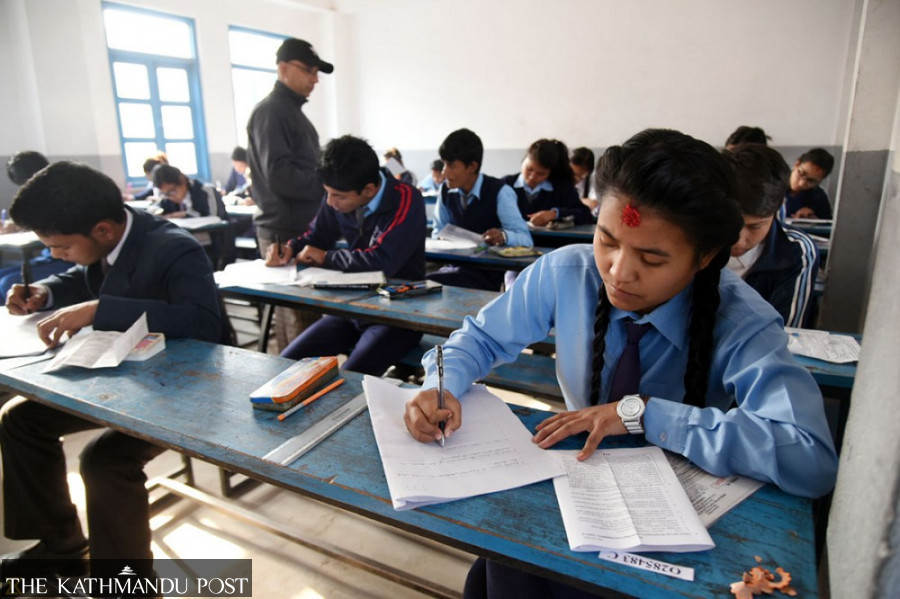National
School enrolment down with decline in population growth
Around half a million less enrolment has been reported in last five years.
Binod Ghimire
The decline in the population growth rate has impacted classrooms with significant declines in student enrolment in schools annually for the last half decade.
Several government reports show net enrolment and school dropout rates have decreased over the years. Nearly three percent students remain out of the school system, which has 97.4 percent enrolment and the retention rate is increasing. However, the number of students in classrooms is decreasing.
A government report for the current fiscal year shows the total number of students in the last academic year was 7.02 million, which is around 200,000 less than the previous year. The survey report says the number of students at the school level has decreased by 520,771 between 2014 and 2020.
In 2014, as many as 7,542,393 students were enrolled from grades one to 12 in schools, both private and public. The number dwindled to 7,021,622 in the last fiscal year.
Officials say the decline in the population growth rate over the years is the primary reason behind the slide in school enrolments. The last national census conducted in 2011 shows a sharp decline in the population growth rate from 2001 to 2011, with the average rate standing at 1.35 percent, a significant plunge from the previous decade 1991-2001.
“The declining population growth rate, the complete closure of schools in the first three months of the current academic year, and the partial closure for a few months have had an impact on the total number of students,” reads the latest Nepal Economic Survey.
The national census conducted every 10 years is being held this year.
“The decline has been seen mostly in the basic level (grades 1-5),” Keshab Dahal, spokesperson at the Centre for Education and Human Resource Development, told the Post.
The annual report prepared by the centre, the government entity that oversees school education, showed the repetition rate for grade one in 2020 was 12.8 percent down from 15 percent in 2014. Similarly, the repetition rate for grades five to eight too has declined by around four percent in the last five years.
Education experts agree that an increase in the student promotion rate, which decreases students’ stay in schools, and the plunge in population growth rate have resulted in the slide in enrolment.
“It is a fact that academic indicators from enrollment to promotion
have improved but the enrollment rate is declining,” Basudev Kafle, a professor at the Tribhuvan University who is involved in school education research, told the Post. “The number of births has decreased. Therefore schools are seeing fewer students.”
The Centre’s report shows the net enrolment rate for primary level has gone up to 97.4 percent from 93 percent between 2014 and 2020. Similarly, the retention rate has improved from 76.6 percent to 79.3 percent while the net enrollment rate for grade 10 has increased to 60.3 percent from 37.9 percent.
Kafle said the fact that the school enrollment rate has increased at the secondary level despite the decrease in enrolments at the basic level proves the thesis that the decline in the population growth rate is a major contributing factor for the decline in school enrollment. As many as 6,230,131 students were enrolled from grades one to eight in 2014. The number decreased to 5,319,004 last year. However, the enrolment rate for grades 9 to 12 had increased to 1,702,618 last year from 1,312,262 five years back.
A report by the United Nations Population Fund says, “The decline in the population growth rate is attributable to a large number of the absentee population.”
As many as 1.5 million youths are working in the Gulf and Malaysia alone. Though there is no accurate data, an estimated 3 million Nepalis are currently working in India. The absence of the youth population is limiting the birth of children, consequently hitting the school enrollment rate.
Owing to the decline in the student enrolment rate, the government has either closed or merged over 1,000 public schools in the last half decade.




 13.12°C Kathmandu
13.12°C Kathmandu















